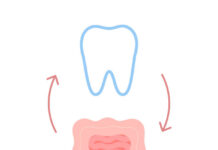Dental restorations are a common solution for patients with damaged or decayed teeth. Two popular options for restoring teeth are full coverage (crown) and partial coverage (inlay and onlay) restorations. This blog will explore the differences between these two types of restorations and help you determine which one may be the best option.
Full Coverage (Crown) Restorations
A dental crown is a full coverage restoration that completely encases the entire visible portion of a tooth. Crowns are typically used to restore teeth that are heavily decayed, broken, or otherwise damaged. They are also commonly used to cover teeth that have had root canal therapy. Crowns can be made from various materials, including ceramic, porcelain-fused-to-metal, and gold.
The advantages of using crowns include
- They provide strong, durable protection for teeth
- They can improve the appearance of a damaged or discolored tooth
- They can be used to restore teeth that have had root canal therapy
Disadvantages of using crowns include
- They can be more invasive than other types of restorations
- They may require multiple dental visits to complete
- They can be more expensive than other types of restorations
Partial Coverage (Inlay and Onlay) Restorations
An inlay or onlay is a partial coverage restoration used to repair damaged or decayed teeth. Unlike crowns, inlays and onlays do not cover the entire visible portion of a tooth. Instead, they are custom-made to fit into a specific tooth area. Inlays are used to restore the chewing surface of a tooth, while onlays are used to restore the cusps (the raised portions) of a tooth. Like crowns, inlays and onlays can be made from various materials, including ceramic, composite, and gold.
Advantages of using inlays and onlays include:
- They are less invasive than crowns
- They can provide strong, durable protection for teeth
- They can improve the appearance of a damaged or discolored tooth
Disadvantages of using inlays and onlays include:
- They may require multiple dental visits to complete
- They can be more expensive than other types of restorations
Comparison of Full Coverage vs. Partial Coverage Restorations
When deciding between a full-coverage crown and a partial coverage inlay or onlay, it is important to consider the specific needs of your tooth. Crowns are generally recommended for teeth that are heavily damaged or have had root canal therapy, while inlays and onlays are generally recommended for teeth with more localized damage.
Both crowns and inlays/onlays can provide strong, durable protection for teeth and improve the appearance of a damaged or discolored tooth. However, crowns are generally considered more invasive than inlays and onlays. In addition, crowns may require multiple dental visits, while inlays and onlays can usually be completed in two visits.
Conclusion
In conclusion, both full-coverage crowns and partial-coverage inlays and onlays can be effective solutions for restoring damaged or decayed teeth. The best option for you will depend on the specific needs of your tooth. If you are unsure which type of restoration is right for you, consult a dental professional or a dental lab in NYC.
FAQs
- What is the difference between a dental crown and an inlay or onlay?
A dental crown is a full-coverage restoration that completely encases the entire visible portion of a tooth. An inlay or onlay, on the other hand, is a partial coverage restoration used to repair damaged or decayed teeth. Inlays are used to restore the chewing surface of a tooth, while onlays are used to restore the cusps (the raised portions) of a tooth.
How long does a dental crown last compared to an inlay or onlay?
The longevity of a dental crown or inlay/onlay can vary depending on factors such as the material used, the location of the tooth, and the patient’s oral hygiene habits. On average, a dental crown can last between 5-15 years, while an inlay or onlay can last between 10-30 years.
Are there any foods or habits that can affect the longevity of a dental crown or inlay/onlay?
Certain foods and habits can affect the longevity of a dental crown or inlay/onlay. For example, biting or chewing hard foods (such as ice or hard candy) can damage the restoration. In addition, habits such as grinding or clenching your teeth can stress the restoration and shorten its lifespan.
How do I know if I need full coverage or partial coverage restoration?
The best way to determine whether you need a full or partial coverage restoration is to consult a dental professional. Your dentist will evaluate the specific needs of your tooth and recommend the best option for you.
What are the costs associated with full coverage and partial coverage restorations?
The cost of a full coverage or partial coverage restoration can vary depending on the material used and the location of the dental lab. You can search for “dental crown labs near me” to find the most affordable lab. In general, crowns tend to be more expensive than inlays and onlays, but it’s always good to consult your dentist or insurance provider to determine the exact cost.

























